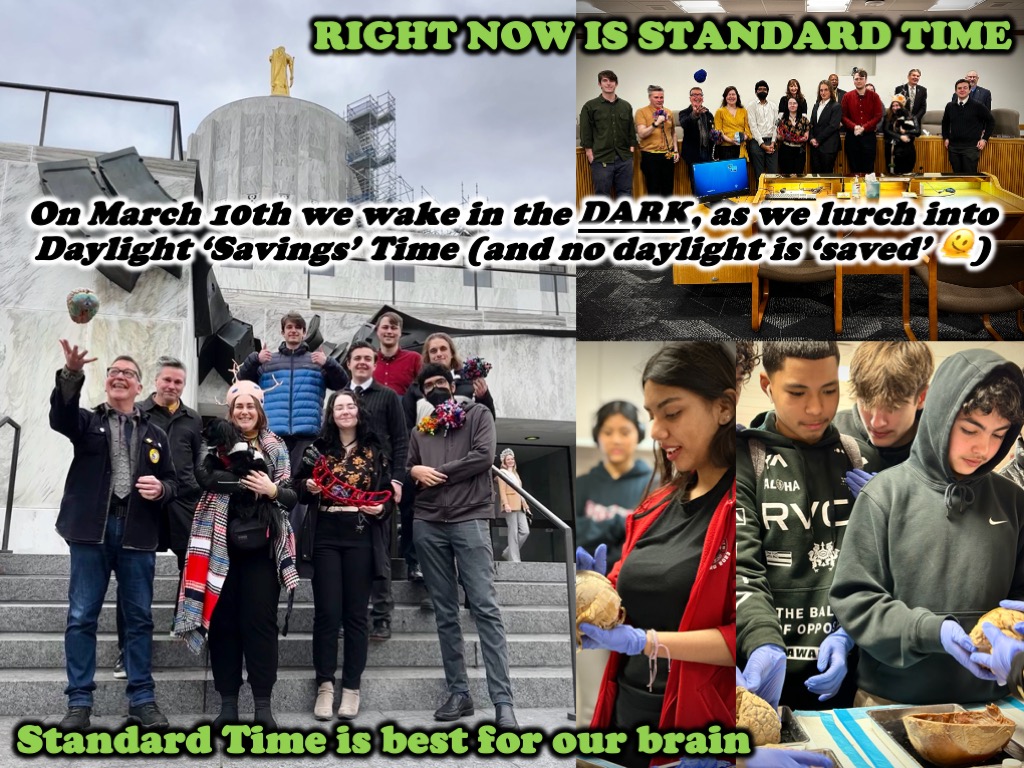We love Fort Vancouver!
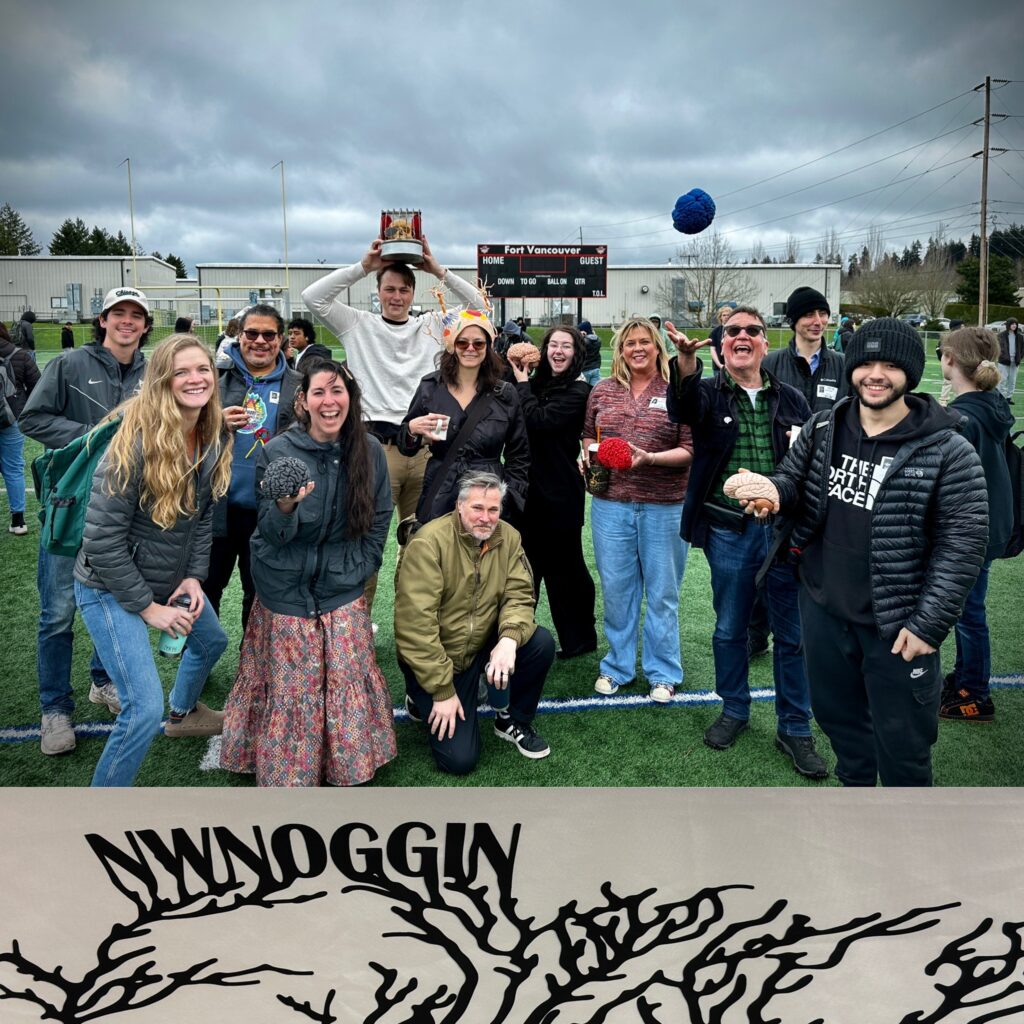
We’ve visited Fort for close to a decade…
…always arriving early, usually in winter, and mostly in the dark.
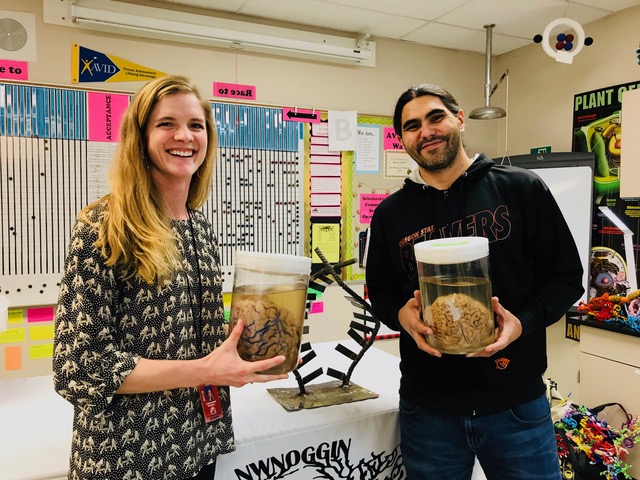
First period started at 7:25am – far too early for healthy adolescent brain development, and we’ve spent years presenting, discussing and exploring the extensive neuroscience research illustrating why early start times are so unhealthy for adolescents.
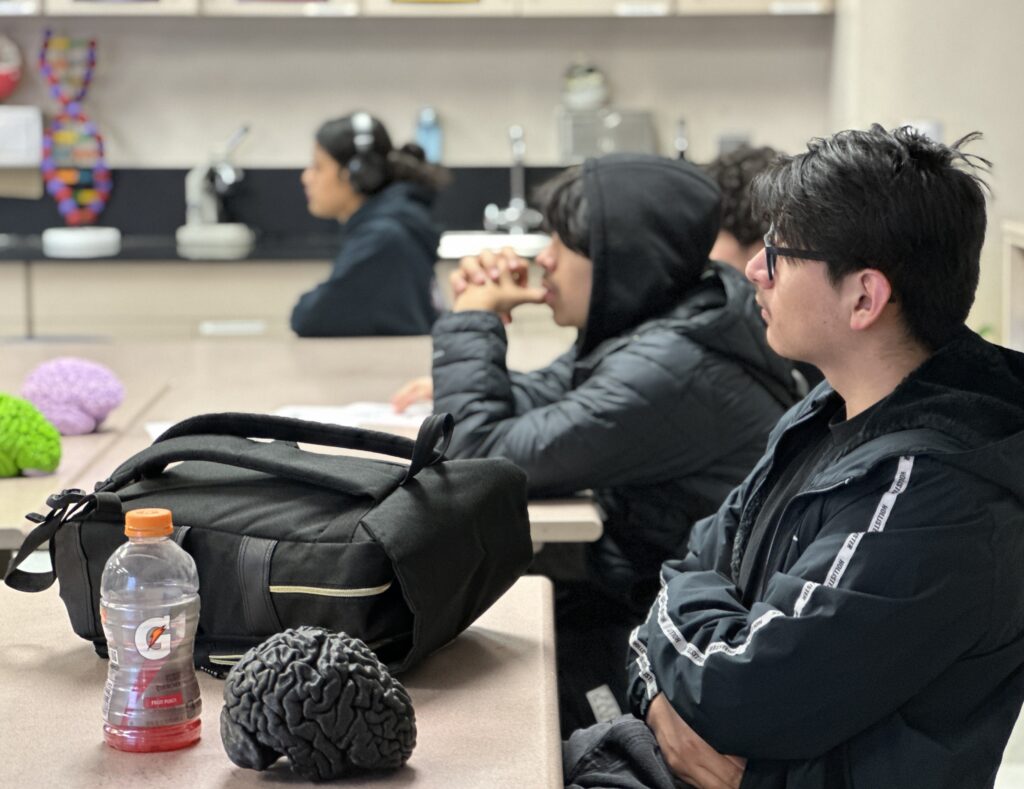
Teenagers experience a natural shift in their sleep/wake (a.k.a. circadian) cycles, making it difficult to fall asleep until late at night, and they require more sleep than adults. Starting classes so early in the morning leads to chronic sleep deprivation and negatively impacts brain development.
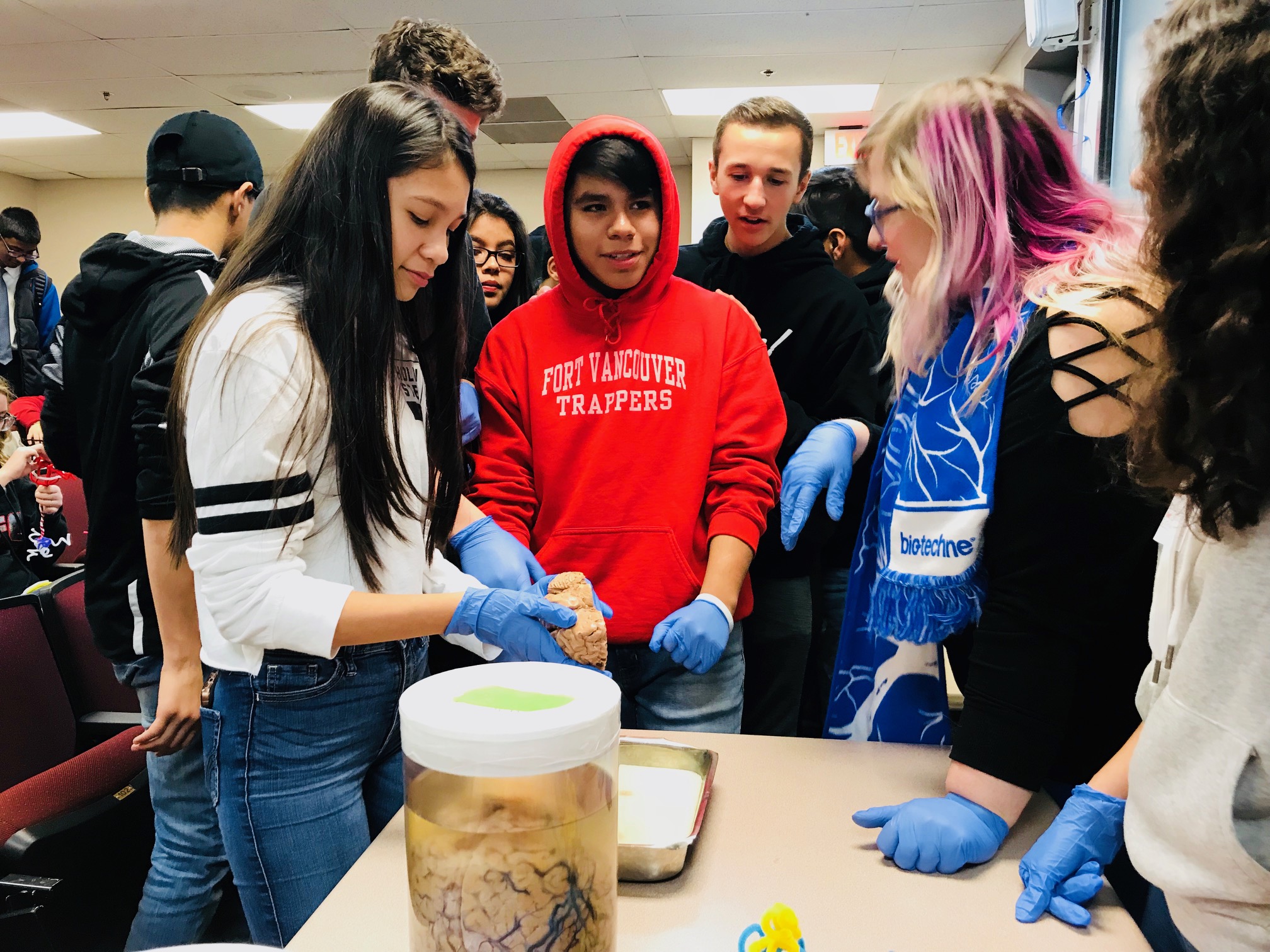
Shifting start times just one hour forward leads to significant drops in mental health diagnoses for ADHD, depression, suicidal ideation and anxiety, reduces accidents and death by suicide, and improves attendance and academic performance.
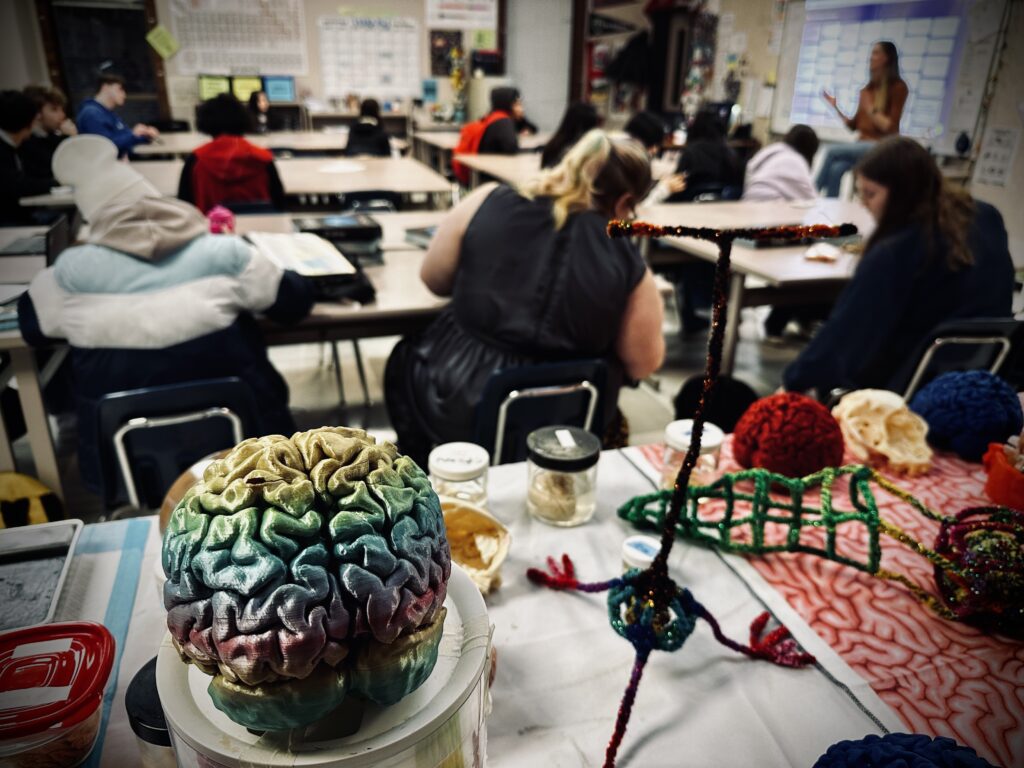
LEARN MORE: Hey Vancouver: Let Kids Sleep!
LEARN MORE: Sleepy brains at Fort
LEARN MORE: Tired Trappers at Fort
LEARN MORE: Uploading your brain from Vancouver
LEARN MORE: Why do you study the brain?
LEARN MORE: Trap Squad!
LEARN MORE: Brains, biofeedback & SLEEP @ Fort Vancouver!
LEARN MORE: Ventricles in Vancouver!
Later school start times improve brain health!
Yet last year our advocacy – along with the impassioned voices of many sleepy students, teachers, parents and other community members – had real impact, as the Vancouver Public School District shifted start times to a far healthier 8:40am!
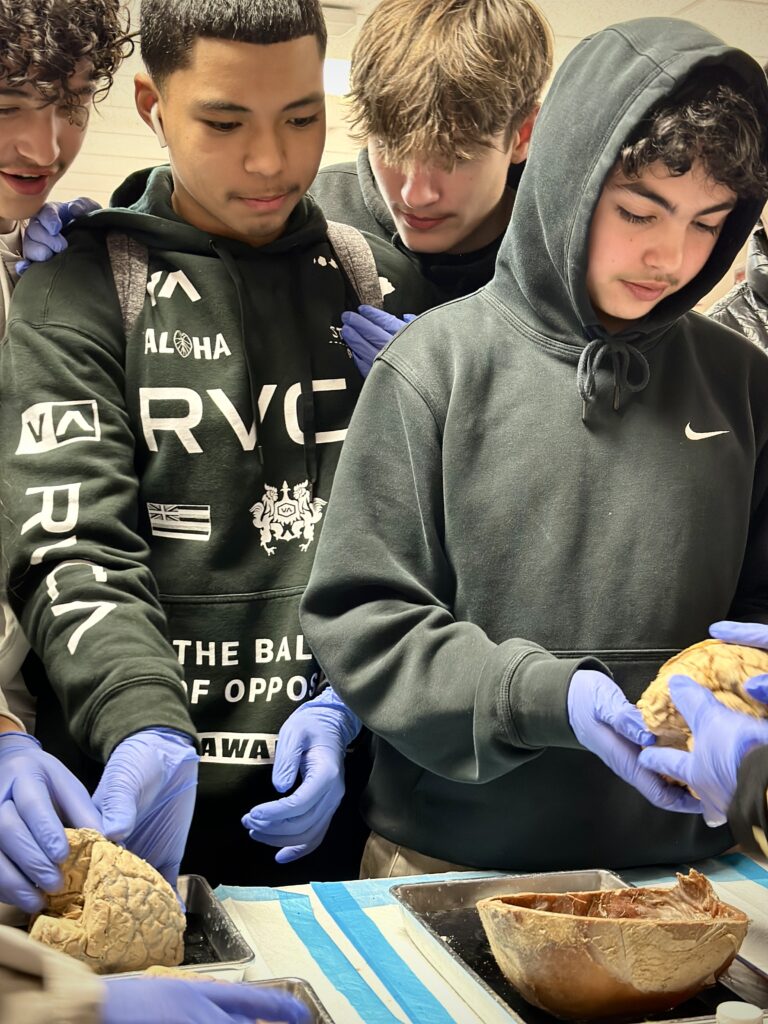
Research informed policy, and the change was good.
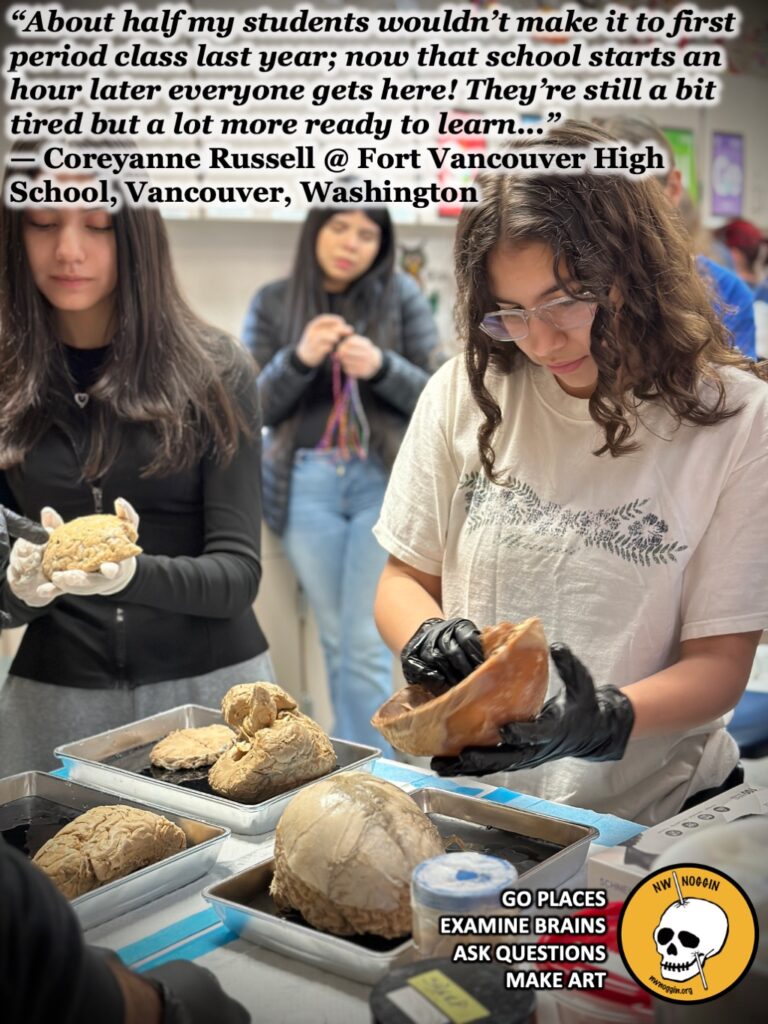
So this year Fort students, teachers and our Noggin participants were a lot more rested – and it was a noticeable change! For one thing, first period was full, and no one was sleeping at their desk. The science teachers told us that students were showing up, and were far better able to engage.

Teachers James Cederstrom and Coreyanne Russell generously provided hot coffee and donuts for our awesome outreach volunteers (did we mention that we love this place?).
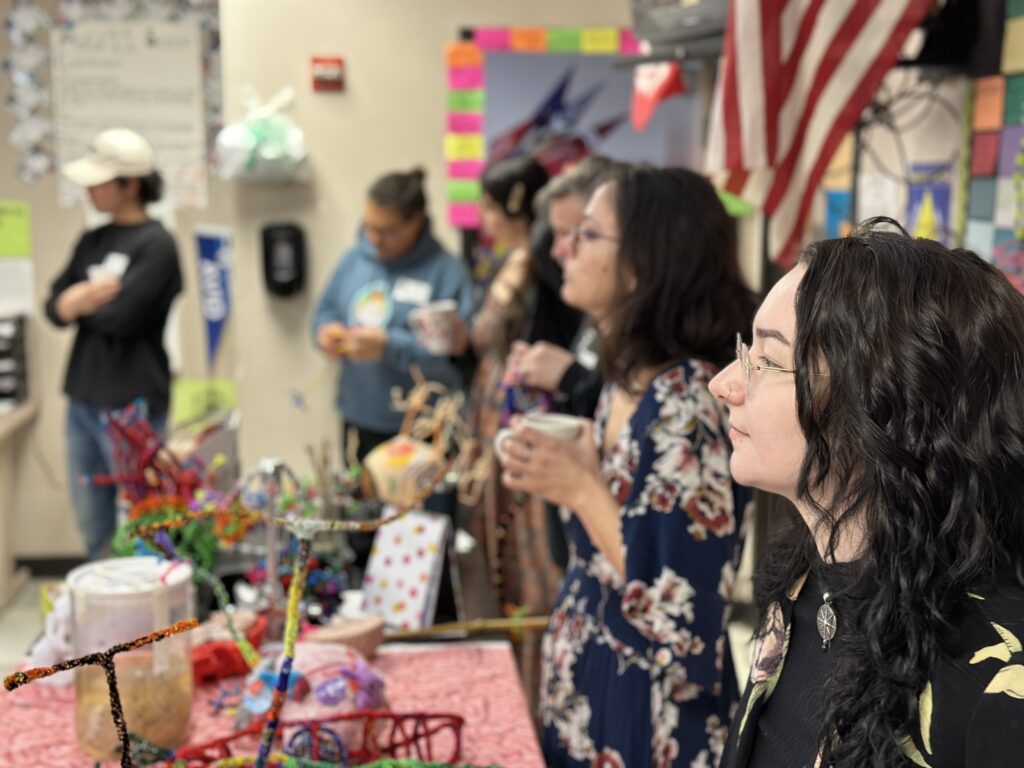
Our Noggin contingent included Denesa Lockwood and Aaron Eisen from Oregon Health & Science University (OHSU), along with Michael Gold, Natalie Robison, Zach Salcido, Becky Callos, Mo DindarAzimi, Jennie Terranova and Justin Benner from Portland State University.
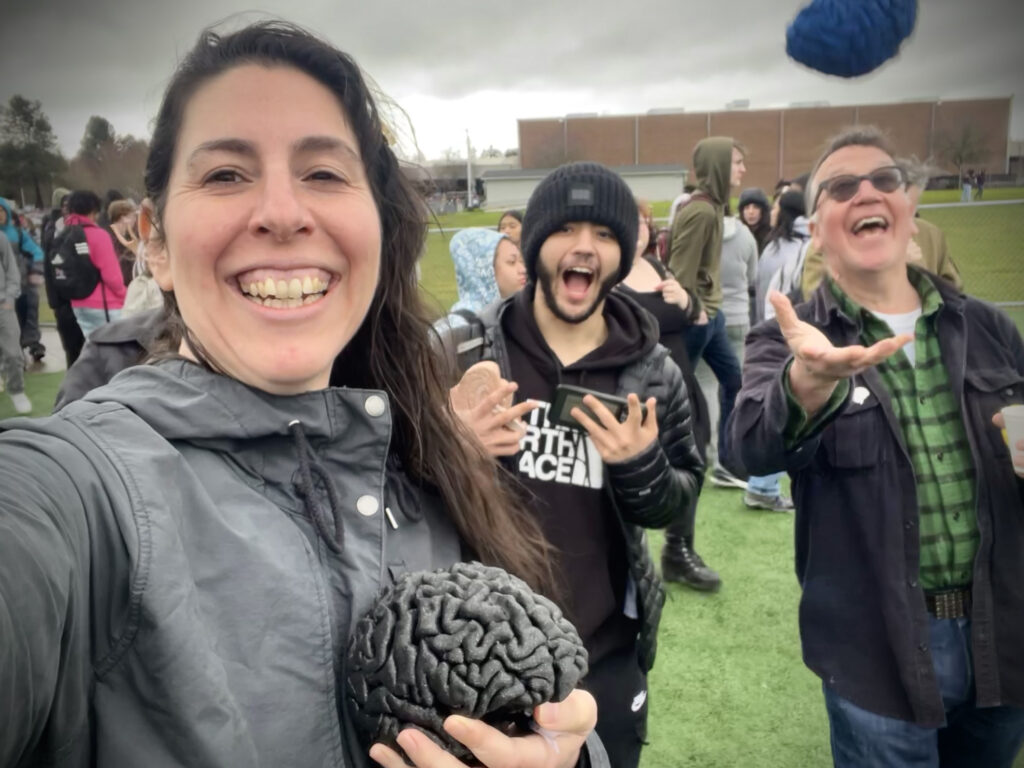
Permanent Standard Time would help too
This week we met with over 350 Fort high school students from 8:40am through 3:10pm!
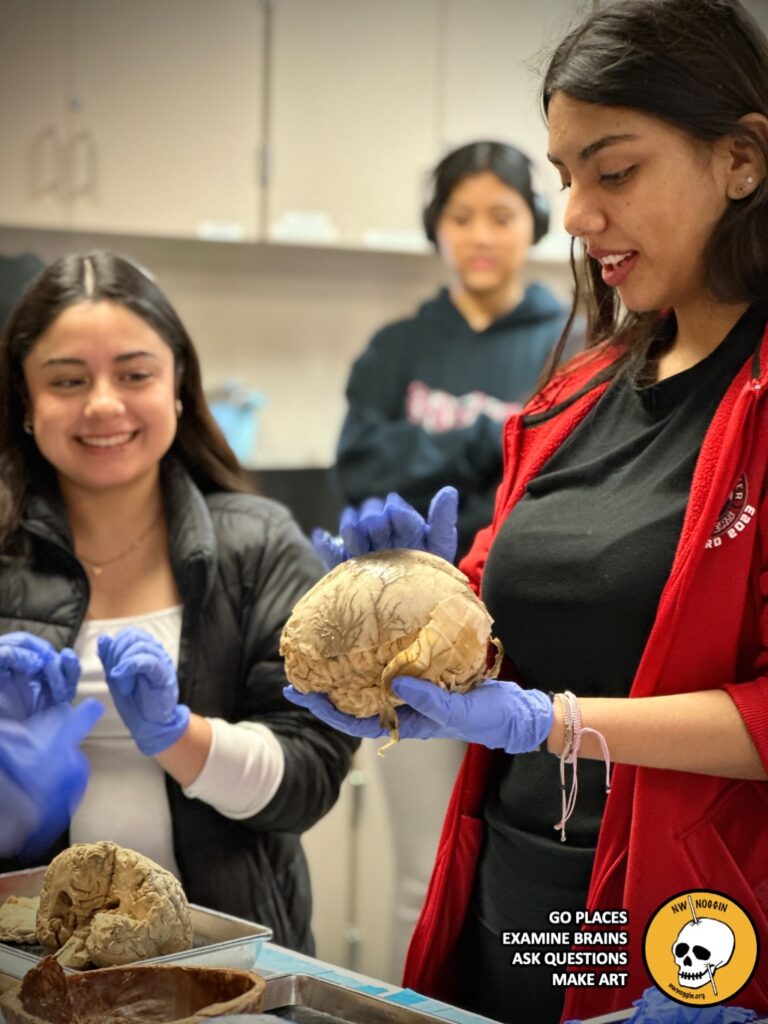
And we still spoke about sleep, as next weekend our clocks will shift ahead with Daylight Savings Time, once again plunging all of us (including adolescents) into morning darkness. There are efforts underway, however, to do away with the dreaded change, and make Standard Time permanent.
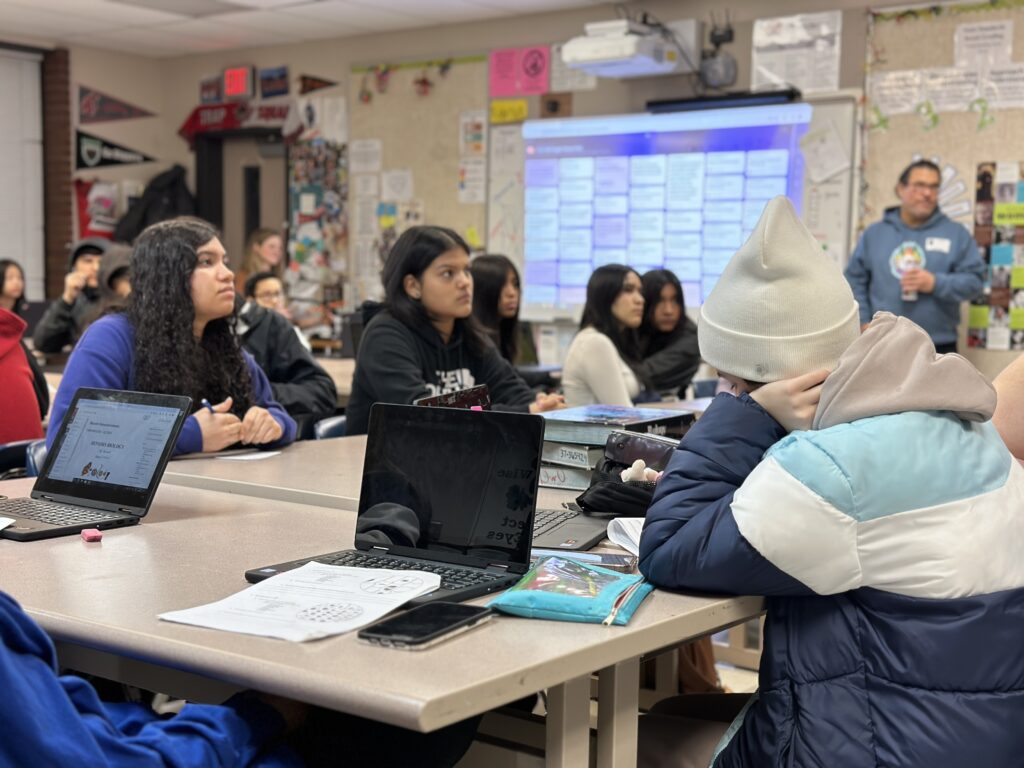
“daylight saving time is less aligned with human circadian biology—which, due to the impacts of the delayed natural light/dark cycle on human activity, could result in circadian misalignment, which has been associated in some studies with increased cardiovascular disease risk, metabolic syndrome and other health risks…”
— Daylight saving time: an American Academy of Sleep Medicine position statement
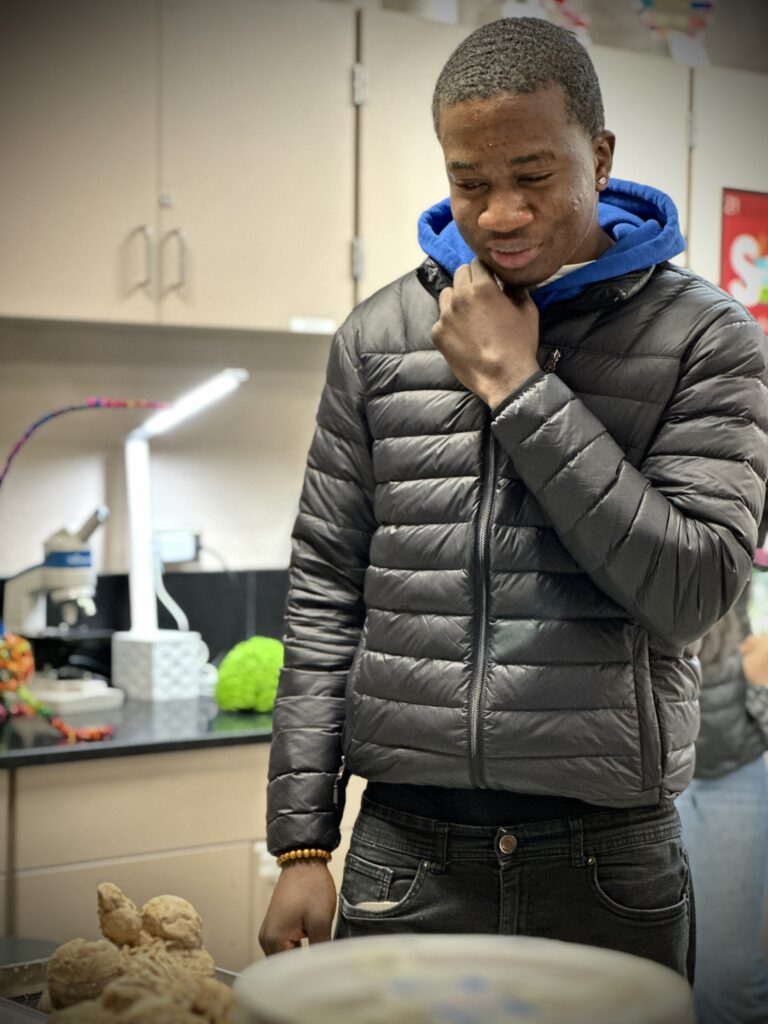
Visiting Oregon’s State Capitol this month to offer evidence-based research on why Standard Time is better for all our brains has been interesting and educational.
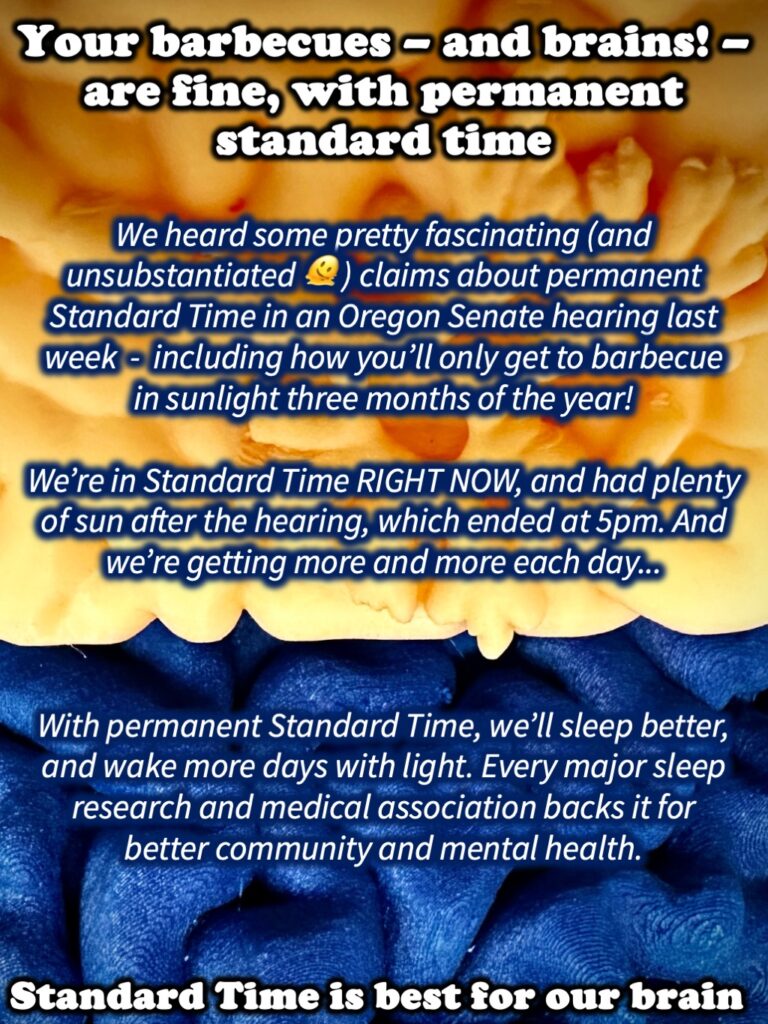
LEARN MORE: Permanent Standard Time is best for your brain
More questions!
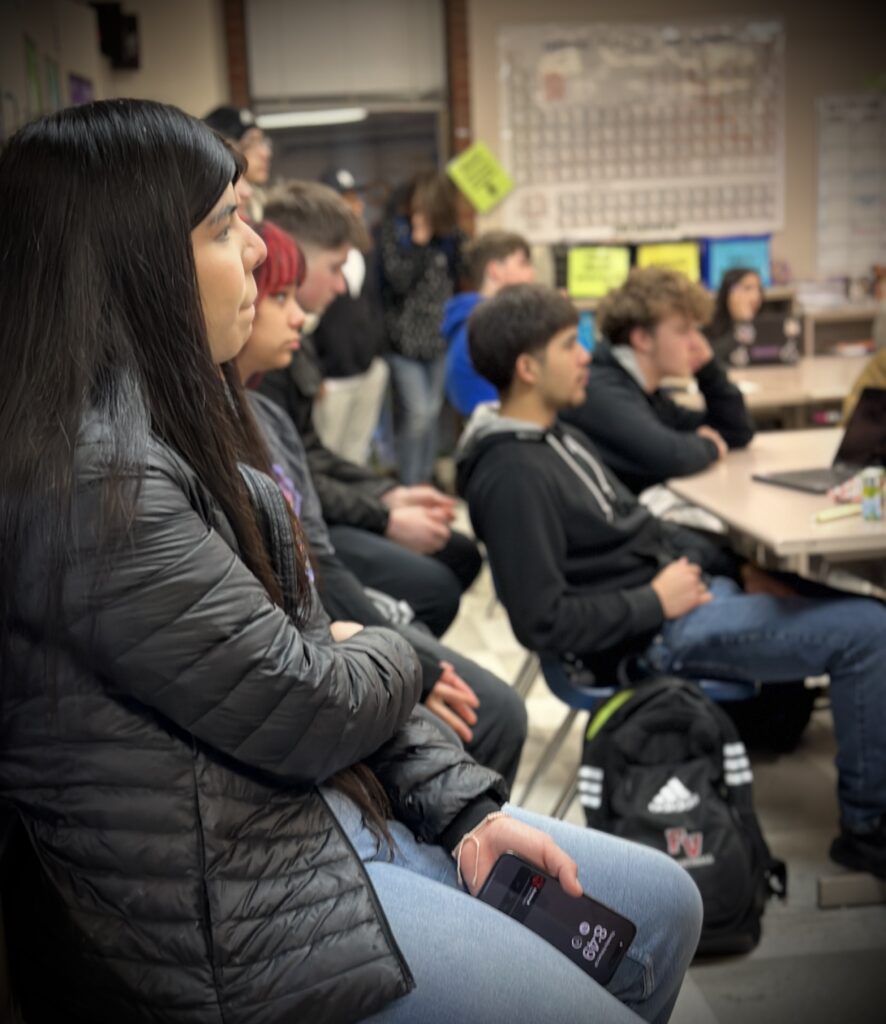
Students had prepared questions about what motivated them – what they really wanted to discuss, present and explore – and we spent period after period engaged in conversation about diverse and fascinating topics.
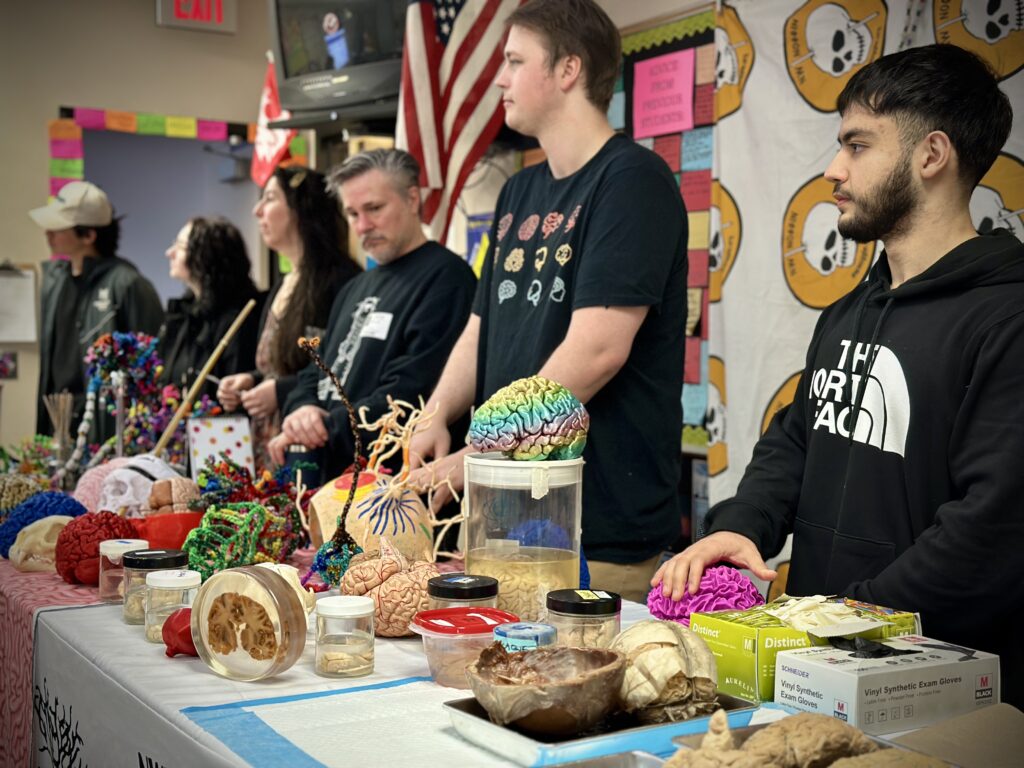

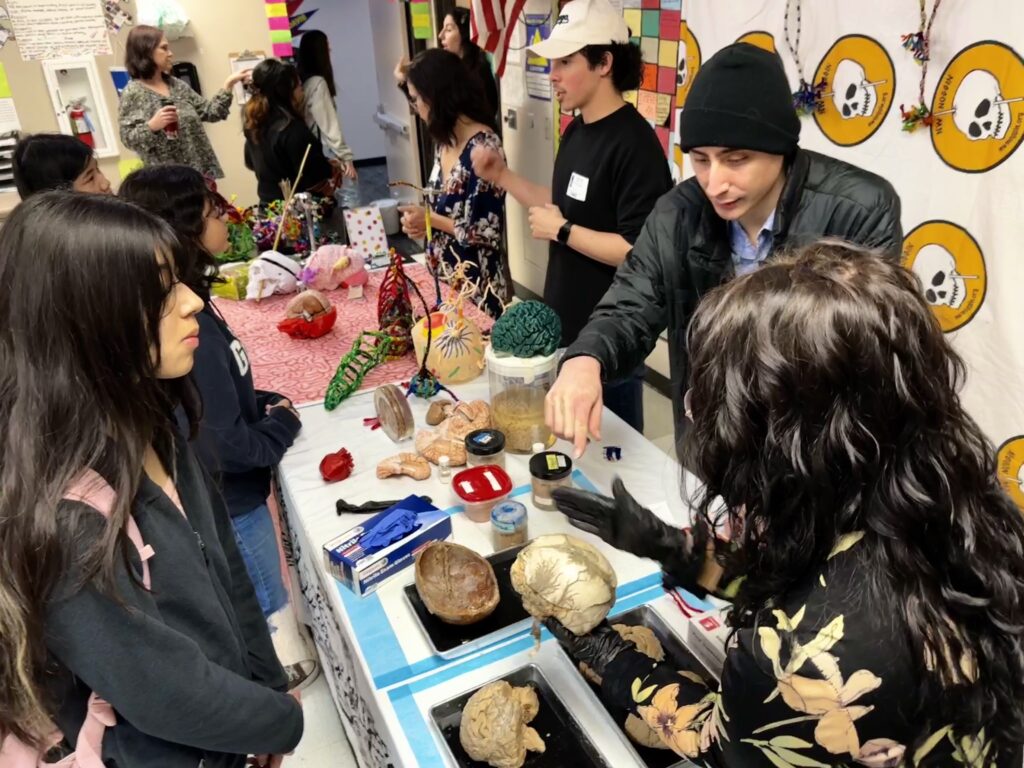
We delved into alcohol and other substance use disorders, the role of genes and family history in drug use and addiction, dissociative identity disorder (DID), sleep paralysis, memory, dopamine and other neurotransmitters, consciousness, visual perception, various forms of color blindness, ADHD, depression, stress, anxiety, multiple sclerosis and the impacts of social media, video games, development, dementia and more!
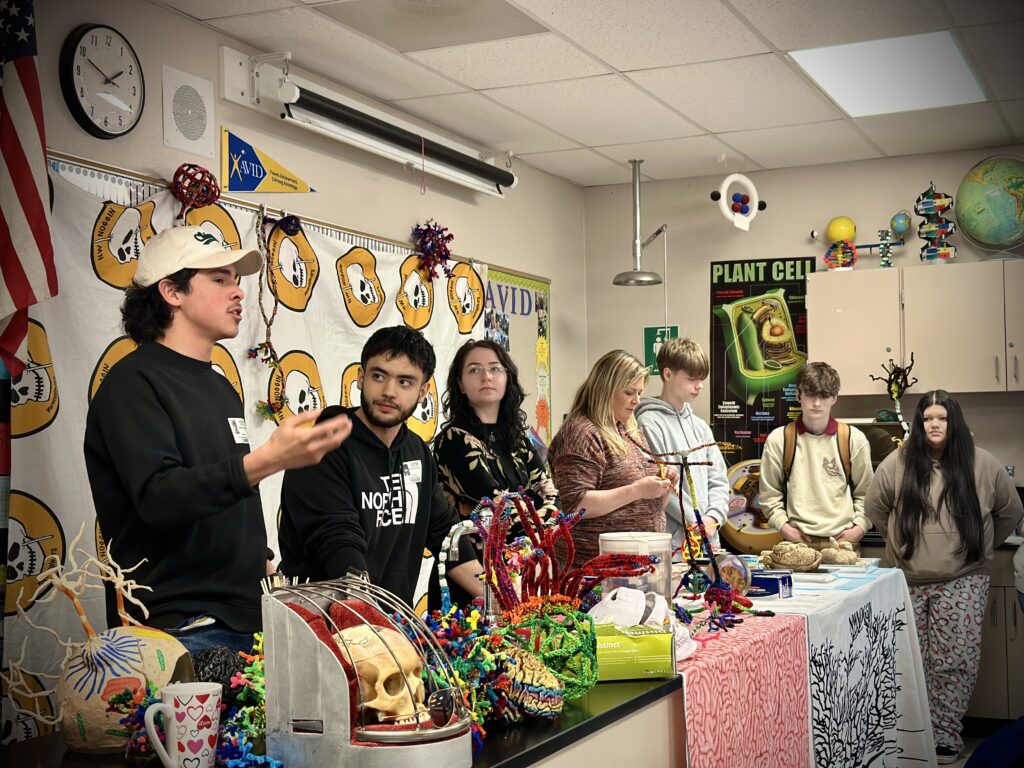
LEARN MORE: Understanding Alcohol Use Disorder
LEARN MORE: Genetics of Alcohol Use Disorder
LEARN MORE: Substance Use and Co-Occurring Mental Disorders
LEARN MORE: Genetics of substance use disorders: a review
LEARN MORE: Dissociative Identity Disorder
LEARN MORE: Sleep Paralysis
LEARN MORE: The neurobiological bases of memory formation: from physiological conditions to psychopathology
LEARN MORE: Researchers uncover how the human brain separates, stores, and retrieves memories
LEARN MORE: The Brain’s Reward System in Health and Disease
LEARN MORE: Consciousness: The last 50 years (and the next)
LEARN MORE: Neural mechanisms underlying visual perception
LEARN MORE: Anil Seth: How Does Your Brain Construct Your Conscious Reality?
LEARN MORE: At a glance: Color Blindness
LEARN MORE: Attention-Deficit/Hyperactivity Disorder
LEARN MORE: What is depression?
LEARN MORE: What is multiple sclerosis?
LEARN MORE: Video games don’t cause violence
LEARN MORE: What Is Alzheimer’s Disease?
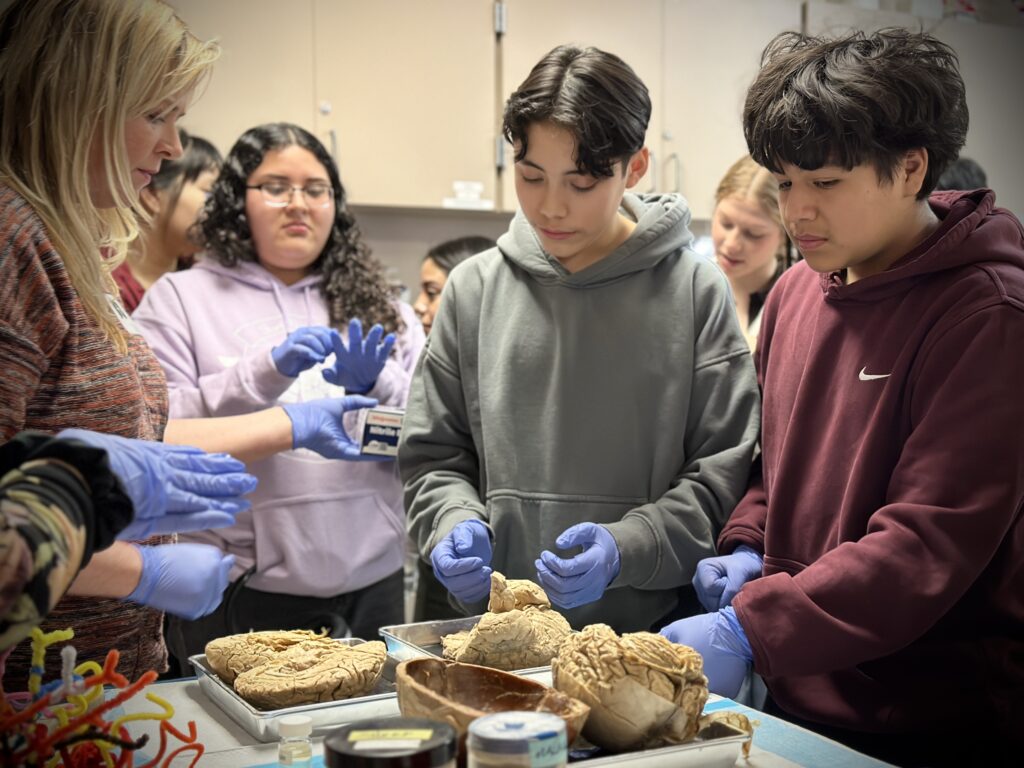
The most wonderful thing about these experiences is how they are all student-led – truly driven by what people already know and want to explore – as opposed to memorizing some dry textbook with a lot of academic jargon promoted by folks who rarely set foot in public schools, and often made even less relevant by testing requirements and/or authorities in Florida, California or Texas.
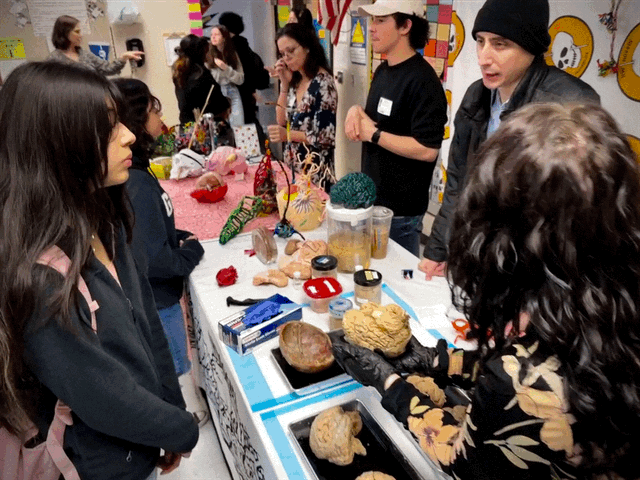
LEARN MORE: How Textbook Adoption in 3 States Influences the Nation’s K-12 Population
And it’s pretty amazing how many “outreach professionals” and “scitalk/scicomm experts” we’ve encountered who rarely teach, or go anywhere (well, aside from conferences, or private tuition-charging schools, or admission-charging museums), or engage across disciplines, or listen to and learn from what community members tell them. But wow do they get the resources!
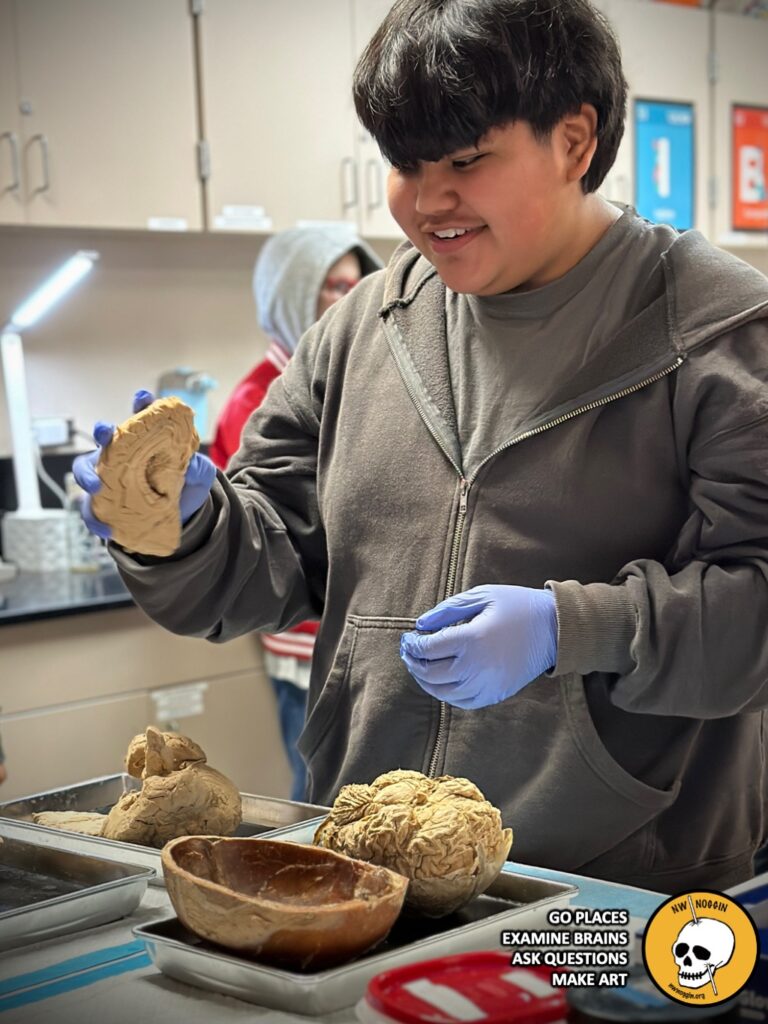
AN EXAMPLE: Thankful for brains
We prefer genuine discussions that tie evidence-based research and local all volunteer undergraduates, faculty and graduate students conducting NIH-funded research to public K-12 student interests and motivations – allowing actual joyous engagement and learning to occur.
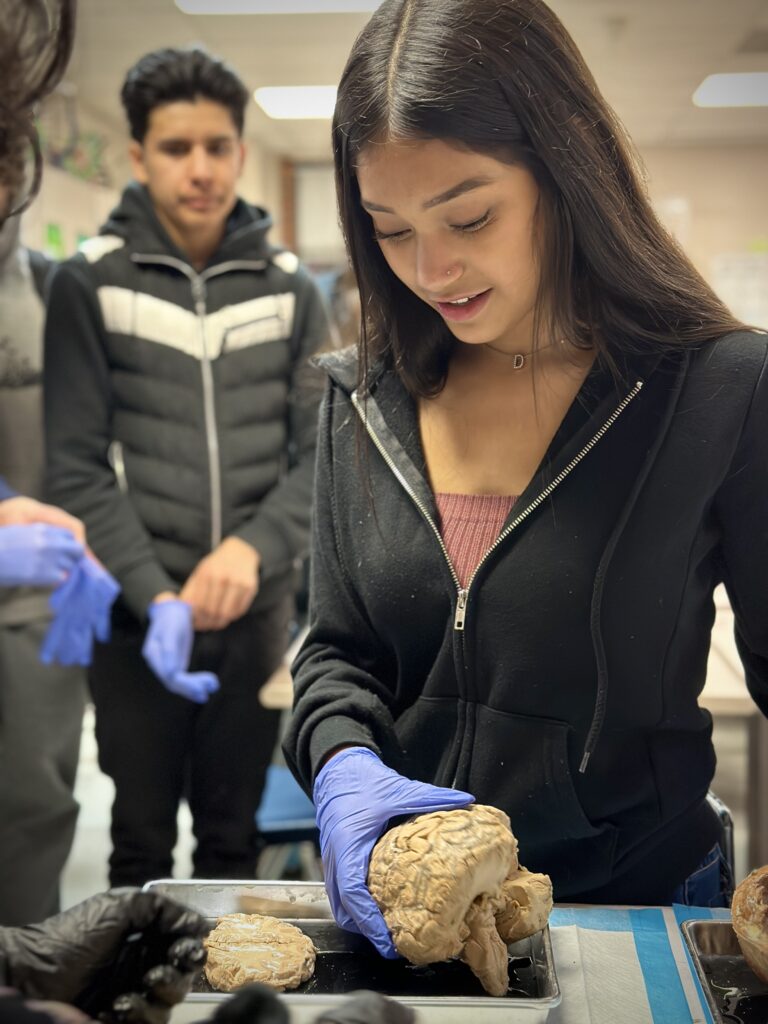

And we are hands on!
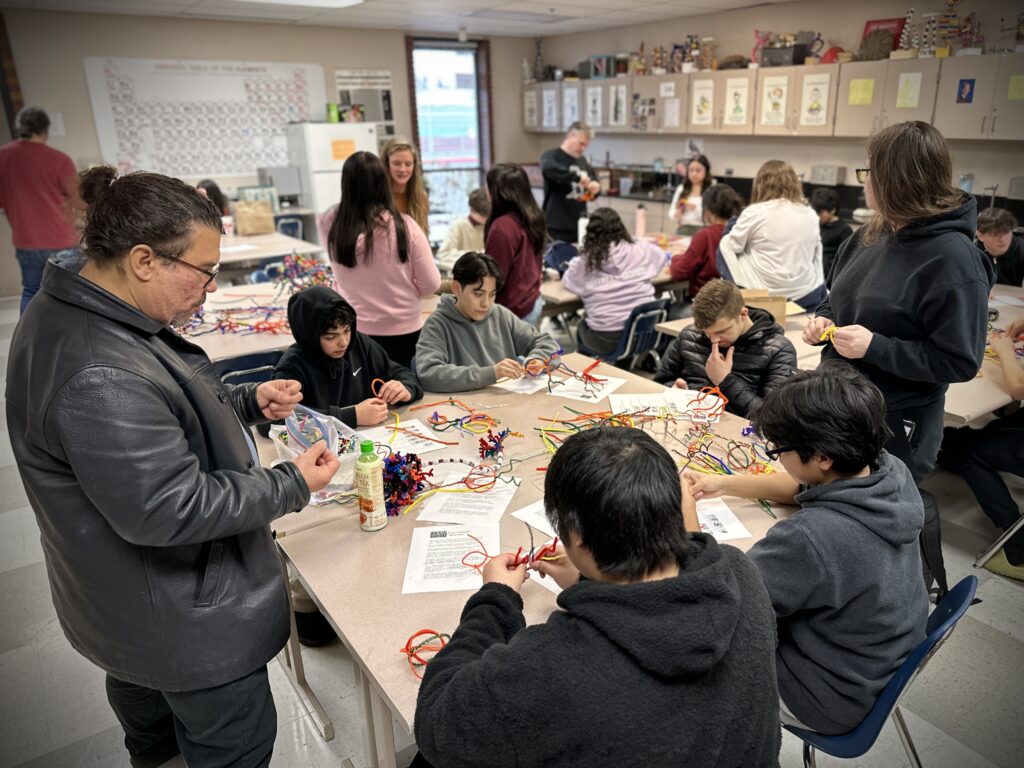

Through art making, direct examination of specimens, pipe cleaner constructed brain cells and 3D printed brains, there are so many wonderful opportunities to ask questions we care about, discover new educational and career pathways, develop better listening and speaking skills, and further excite interest in who we are and how we function.



And neuroscience research on sleep, addiction, stress, development and more is not only deeply compelling, but also suggests better policy approaches – and we love it when it can help move the needle and improve people’s lives as it clearly has at Fort Vancouver.
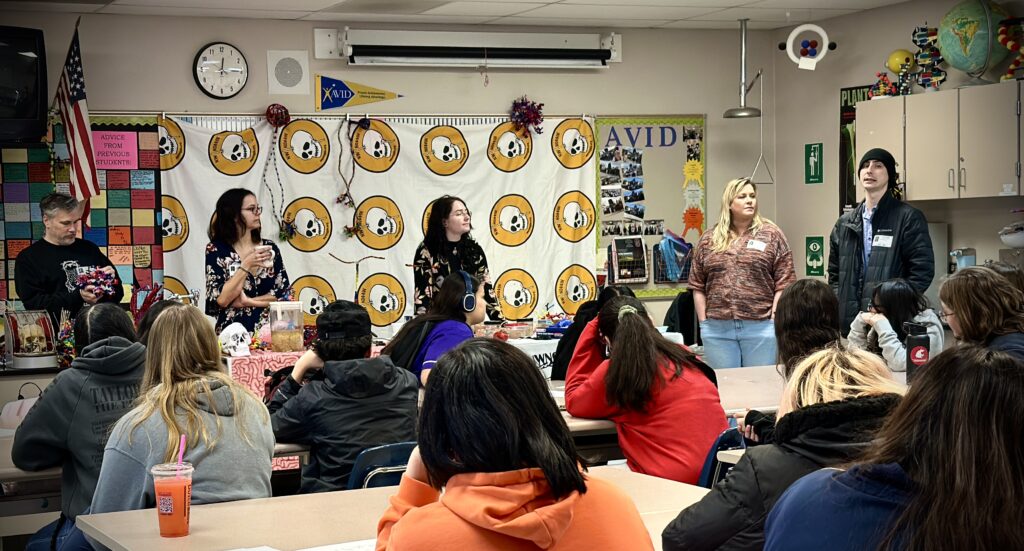
READ MORE STUDENT QUESTIONS: ?s for NW Noggin’
THANK YOU!
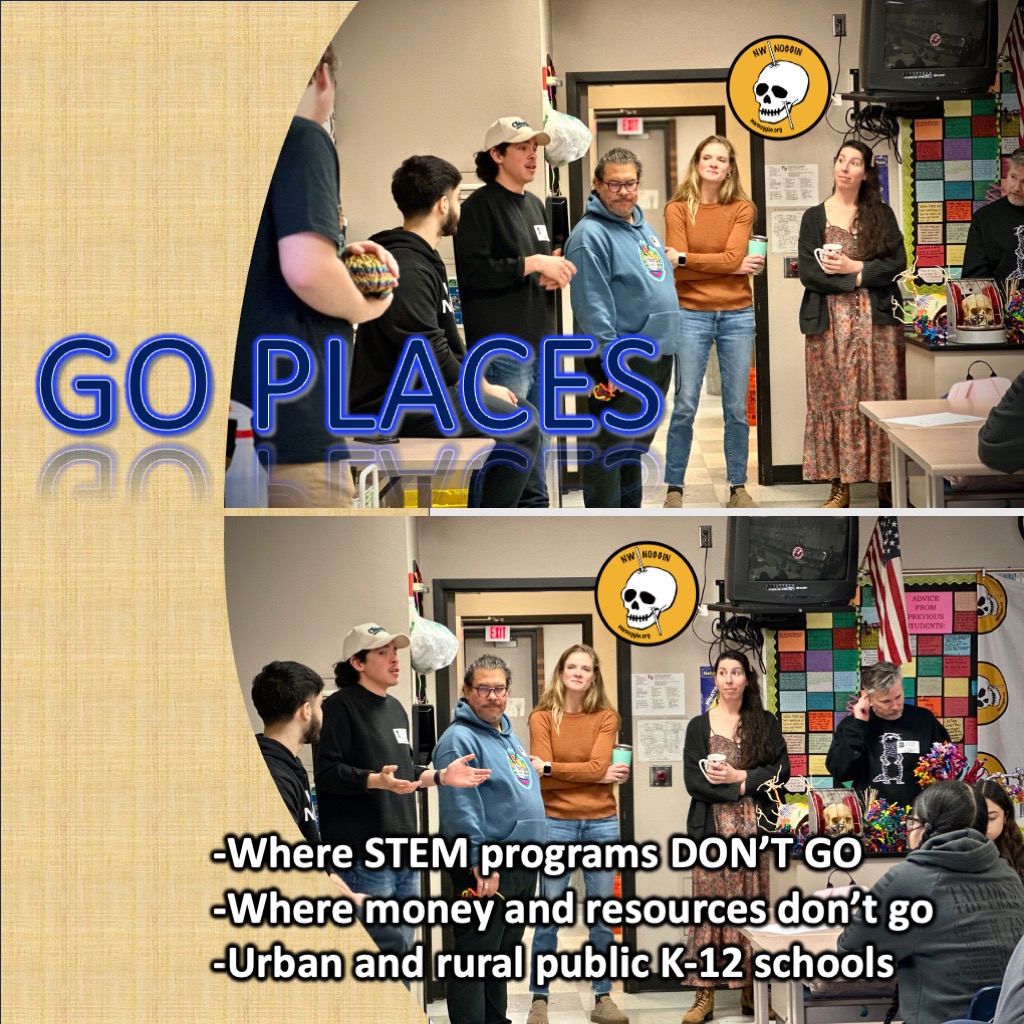
Huge thanks to Coreyanne Russell, James Cederstrom, and all the students, teachers and staff at Fort Vancouver! And tremendous kudos to our indefatigable Northwest Noggin volunteers!
